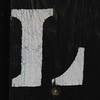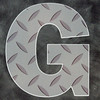1. What are your favorite tools you now have in your personal technology toolbox? Briefly describe a particular activity that you will plan for your students using at least one of these new tools. I loved Photo Story 3 - I will have my students create science presentations of their science experiments using this app. I will use Jing for teaching students how to complete a process as they rotate into a center. I will eliminate the need of repeating the same set of instructions. This will give me time to work with students that need help.
2. How have you transformed your thinking about the learning that will take place in your classroom? I like the idea of having a blog. So, to start with I will have students add it to my favorites and they will always know to access it for any information; whether I am absent and assign a link to Jing or the student just wants to keep in touch.
3. Were there any unexpected outcomes from this program that surprised you? Yes, this was a lengthy program, but honestly, sometimes we have to get that little "push" to get us to look at what is on the other side of the technology world. It's nice to have gotten out of my comfort zone and try new apps! I was surprised by how easy the apps were to use and how fun!
Steph’s Café
Thursday, July 15, 2010
Tool #11
In YOUR blog post, discuss at least three things you would want to make sure your students understand about being good digital citizens. Explain briefly how you would "teach" the idea of digital citizenship to your students.
This is a fabulous way to wrap the 11 tools up. So here is my list of 3:
1. First, I model my thinking and how I conduct my searches on google, or what ever search engine. I talk out loud so my students can hear my thoughts as I type in key words.
2. Next, I want my students to know that just because it is published on the Internet, it does not make it a fact or true. We could even run an example by comparing true scientific data and then finding bogus information on the web. This would further prove the need to cross reference and pull up various resources to confirm or reject the information found.
3. Last, but not least, they need to respect others online. I enjoyed the first part of the 11 tools where we discussed the cyber bullying. So, whether in posts, or with classmates as they share a resource, they must demonstrate patience and respect.
This is a fabulous way to wrap the 11 tools up. So here is my list of 3:
1. First, I model my thinking and how I conduct my searches on google, or what ever search engine. I talk out loud so my students can hear my thoughts as I type in key words.
2. Next, I want my students to know that just because it is published on the Internet, it does not make it a fact or true. We could even run an example by comparing true scientific data and then finding bogus information on the web. This would further prove the need to cross reference and pull up various resources to confirm or reject the information found.
3. Last, but not least, they need to respect others online. I enjoyed the first part of the 11 tools where we discussed the cyber bullying. So, whether in posts, or with classmates as they share a resource, they must demonstrate patience and respect.
Tool #10
1. Discuss some of the free educational apps you reviewed.
NASA App By NASA - this is a great app for students to explore our universe. There are images and accompanying information about the universe, including missions and info. Very interesting!
Space Images – NASA/Jet Propulsion Laboratory this is another fantastic application to explore outer space. The students will LOVE this app!
2. OPTIONAL: If you had an opportunity to play with one of the devices, briefly describe your experience. Was there a WOW moment?
3. Discuss ways your students could use the iTouch or iPad and appropriate apps in your class.
A great way to use the iTouch in the classroom is as a center for reviewing science concepts.
NASA App By NASA - this is a great app for students to explore our universe. There are images and accompanying information about the universe, including missions and info. Very interesting!
Space Images – NASA/Jet Propulsion Laboratory this is another fantastic application to explore outer space. The students will LOVE this app!
2. OPTIONAL: If you had an opportunity to play with one of the devices, briefly describe your experience. Was there a WOW moment?
3. Discuss ways your students could use the iTouch or iPad and appropriate apps in your class.
A great way to use the iTouch in the classroom is as a center for reviewing science concepts.
Tool #9
1. Discuss how the screencast could help your students and how you might have students use Jing. I love this software! Okay, so here is what I would do...if I were going to be absent and I had to assign a computer project on the macs, then I would have students log into my blog and follow the link to Jing for the instructions on hhow to complete the assignment. This way, as the students rotate onto the laptops, I do not have to repeat the intructions on how to complete the technology assignment. As a matter of fact, I don't even have to be absent to implement and use Jing. This is an extremely nifty tool that I will certainly use in the classroom.
2. Discuss how you might use Skype with your students and share across the district, the state, the nation, or the world! Skype is great for video conferencing with other classrooms around the world. I think it would be an incredible experience to expose the students to other classrooms in other countries. This is a great social studies project, to learn about other cultures, that will integrate technology. This is just one example of the many uses Skype will have in the classroom.
2. Discuss how you might use Skype with your students and share across the district, the state, the nation, or the world! Skype is great for video conferencing with other classrooms around the world. I think it would be an incredible experience to expose the students to other classrooms in other countries. This is a great social studies project, to learn about other cultures, that will integrate technology. This is just one example of the many uses Skype will have in the classroom.
Thursday, July 1, 2010
Tool #8
The two videos I selected are hotlinked and embedded. The embedded one is about Jupiter (Blinkx)and it is located on the right of my blog. The video that I hotlinked is about the life cycle of a butterfly (Hulu).
The videos I selected will aid my students in grasping science concepts being presented. It will give them visual information needed to understand the life cycle of a butterfly and interesting facts about Jupiter.
Life Cycle of a Butterfly
The videos I selected will aid my students in grasping science concepts being presented. It will give them visual information needed to understand the life cycle of a butterfly and interesting facts about Jupiter.
Life Cycle of a Butterfly
Tool #7
I Loved this part of the assignment! This was tons of fun and I could definitely see the students using this to report their steps and findings while using the Scientific Method. Very engaging!
Tool #6
IN YOUR BLOG post, discuss how students might use wikis to aid in their learning. Did any of the sample wikis you viewed give you any particular ideas for using a wiki in your classroom for students. How about for and your team or department?
The sample wiki "Center of Mass" was particularly interesting. I liked the manner in which it was defined, samples of objects given, then more intricate objects, and then a trick that can be done by anyone with a soda can. This definitely appeals to students. From my perspective, it was basically a science experiment gone "viral." This will be a great way to explore scientific inquiries based on scientific facts. The first thing that comes to mind is that this is a great way to post a scientific process, etc. Students will certainly be engaged.
From a "team" perspective, this is a great way to share information on ELL's (being a bilingual teacher) and Science, since this is what I will be teaching next year.
The sample wiki "Center of Mass" was particularly interesting. I liked the manner in which it was defined, samples of objects given, then more intricate objects, and then a trick that can be done by anyone with a soda can. This definitely appeals to students. From my perspective, it was basically a science experiment gone "viral." This will be a great way to explore scientific inquiries based on scientific facts. The first thing that comes to mind is that this is a great way to post a scientific process, etc. Students will certainly be engaged.
From a "team" perspective, this is a great way to share information on ELL's (being a bilingual teacher) and Science, since this is what I will be teaching next year.
Subscribe to:
Posts (Atom)






